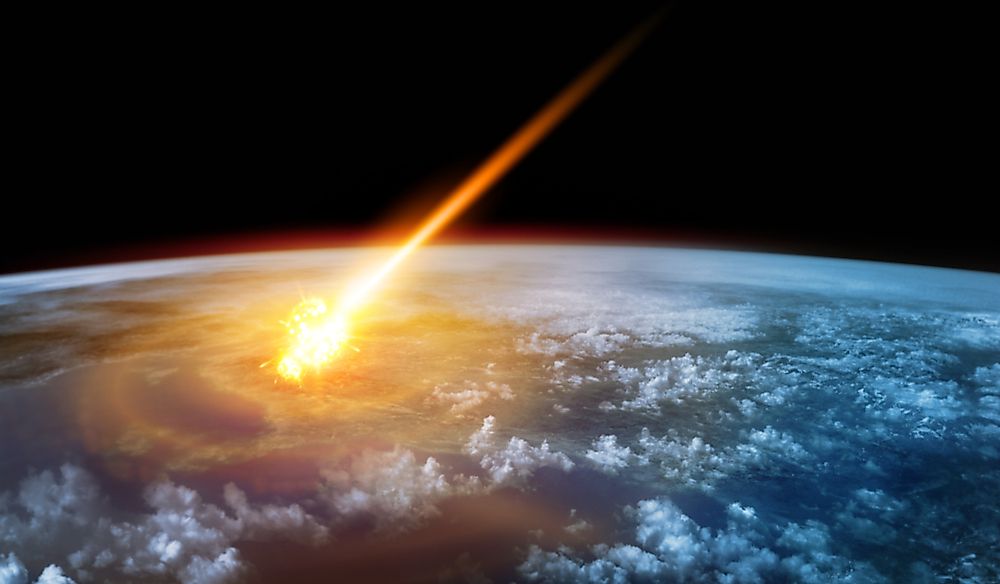What Is An Impact Event?

An impact event is an occurrence in space whereby astronomical objects collide. The impact of these events have physical effects, but the extent depends on the size of astronomical objects that collide. The collision of large objects can lead to enormous consequences, including mass extinctions. Collisions normally occur in the planetary systems when comets, asteroids, or meteoroids collide with terrestrial planets such as Venus or Earth. The common features that result from impact events are impact structures and craters.
Effects of Impact Events
Impact events have contributed to the evolution of the Solar System and shaped the formation of the Earth-Moon system. In fact, an impact event is attributed to the origin of water on Earth. Impact events have also completely altered the history of Earth by changing the evolutionary history of life and by causing mass extinctions of creatures millions of years ago. An impact event is credited for the formation of the Late Heavy Bombardment (LHB) between 3.8 and 4.1 billion years ago, which was a collision between asteroids and early inner terrestrial planets including Earth, Venus, and Mercury.
Effects of Impact Events Elsewhere in the Solar System
The North Polar Basin on Mars is believed to have been created by an impact event between 3.8 to 3.9 million years ago. Utopia Planitia is another confirmed impact basin on Mars, as well as Hellas Planitia, which is the largest visible impact crater in the Solar System. There is also significant evidence on the surface of Mars that suggests a possible interplanetary collision occurred millions of years ago. The Caloris Basin is an impact crater formed by a huge impact event on Mercury. Impact craters have also been observed on some of Saturn’s several moons, such as are Odysseus on Tethys and Herschel on Mimas. An unusual spin was recorded on Uranus, which occurred when the planet collided with massive objects that were twice the size of Earth. There is also strong evidence of impact events on the Moon, the largest identified being the South Pole-Aitken basin.
Examples of Impact Events
The Chicxulub impact, Tunguska event, and Chelyabinsk meteor event are some of the most notable impact events ever identified on earth. The Chicxulub impact occurred over 66 million years ago and is believed to have led to the Cretaceous-Paleogene extinction event. The Tunguska event occurred in Siberia in 1908, and involved a huge explosion that burned over 80 million trees in an area of 830 square miles.
The most recent impact event was the Chelyabinsk meteor that entered Earth's atmosphere over Russia at very high speed on February 15, 2013. The event generated heat up to 2,370 °C and light from the meteor was visible more than 62 miles away, within the Southern Ural region. Numerous injuries were reported, but no deaths were recorded.
Recent occurrences of impact events have provided astronomers with opportunities to observe extraterrestrial collisions, and have caused researchers to establish programs, such as Lincoln Near-Earth Asteroids Research (LINEAR) and Lowell Observatory Near-Earth Object Search (LONEOS), which have led to an increase in the rate of asteroid discoveries. In 1992, the United States government tasked NASA to launch the "Spaceguard survey" that identifies and studies near-Earth objects (NEO).











